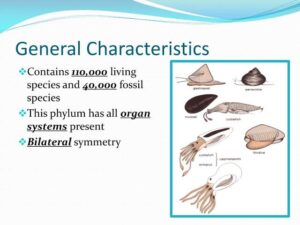Back to: ZOOLOGY 200 Level
WELCOME TO CLASS
Today’s lesson focuses on a very important Zoology concept—General Characteristics. These are the common features shared by animals within a particular group or phylum. Understanding these traits helps scientists classify and study animals effectively, and helps you, as a future zoologist, make sense of the wide variety of animal life.
General Characteristics
Body symmetry
Animals can be classified by the way their bodies are shaped or arranged. Some, like jellyfish, have radial symmetry, meaning their body parts are arranged around a central point, like spokes on a wheel. Others, like humans and dogs, have bilateral symmetry, meaning their left and right sides mirror each other. This tells us how they move, feed, and interact with their environment.

Levels of organisation
Animals vary in their structural complexity. Single-celled animals like amoeba show a cellular level of organisation, while more advanced animals like fish or birds display a tissue-organ-system level. This means they have specialised tissues and organs that perform different tasks to keep them alive and active.
Body cavity (coelom)
The presence or absence of a coelom, a fluid-filled body cavity, is a major feature used in classification. Animals without a coelom are acoelomates (e.g., flatworms). Those with a partially developed cavity are pseudocoelomates (e.g., roundworms), and animals with a fully developed coelom are coelomates (e.g., earthworms, insects, humans).
Germ layers
During development, animals form layers of cells called germ layers. Most animals form three: ectoderm, mesoderm, and endoderm—making them triploblastic. Simpler animals like cnidarians form only two layers and are called diploblastic. These layers later develop into all the different tissues and organs in the body.
Reproduction
Animals reproduce in different ways. Asexual reproduction (e.g., budding in Hydra) involves only one parent, while sexual reproduction involves male and female gametes, as seen in frogs, birds, and mammals. Reproductive method is a key trait in animal classification.

Habitat and lifestyle
Animals are found in various habitats—land, freshwater, oceans, or inside other organisms. Some are free-living, like snails or ants, while others are parasitic, like tapeworms, depending on a host to survive.
Summary
General characteristics include body symmetry, level of organisation, presence of coelom, germ layers, reproductive method, and habitat. These features help us understand how animals are structured, how they live, and how they are grouped.
Evaluation
- Define general characteristics in zoology.
- Differentiate between bilateral and radial symmetry.
- What are the three types of body cavities in animals?
- Mention two examples of free-living and parasitic animals.
You’re building a strong foundation that’ll serve you all through your study of Zoology. Stay committed, stay curious, and trust Afrilearn to keep bringing you the best learning experience. Ready for the next lesson?
